Where eagles fly
In the throes of human-induced mass extinction, we can look up and see one Herculean success story. Can we do it again?
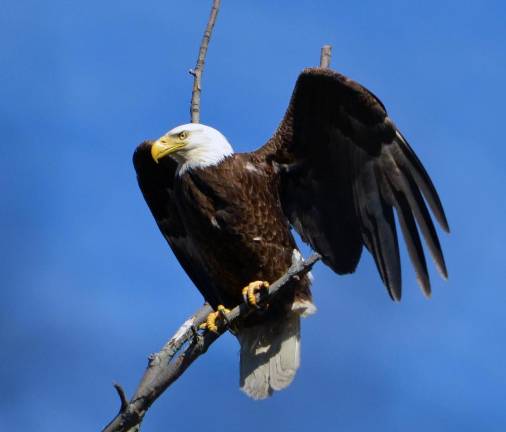
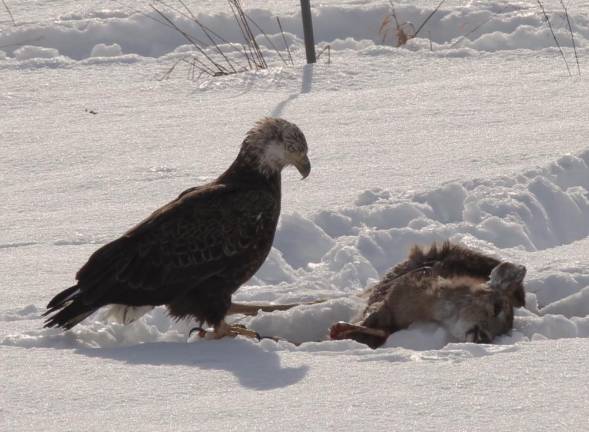
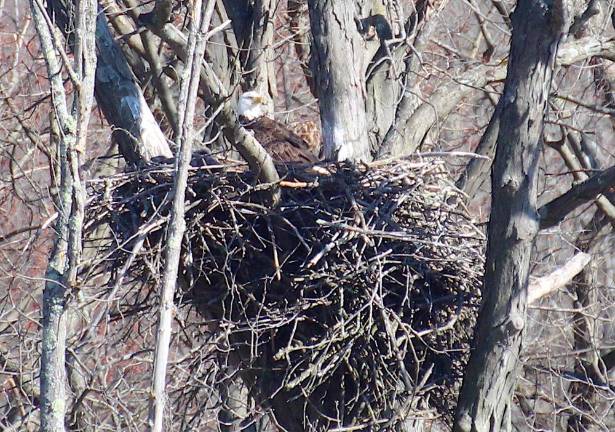
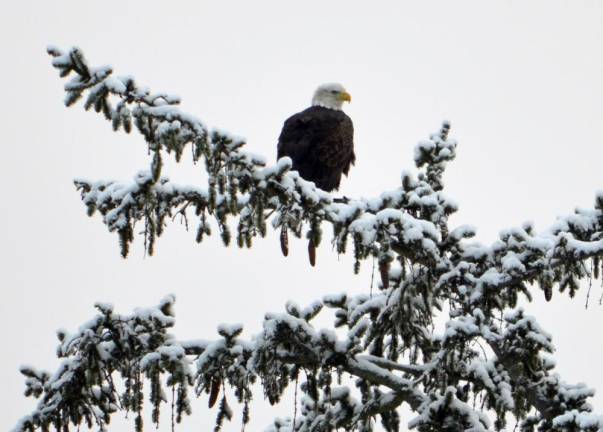
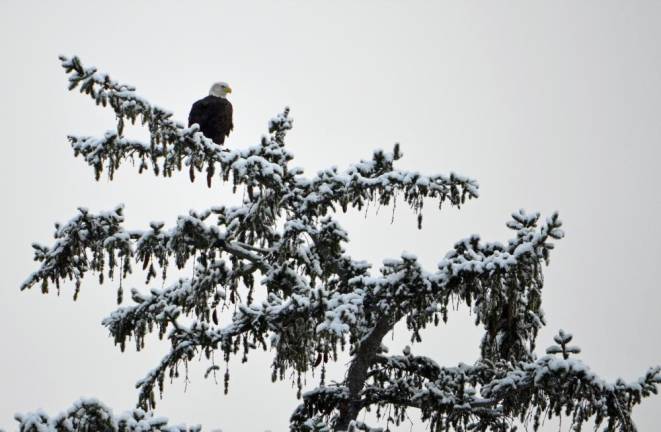

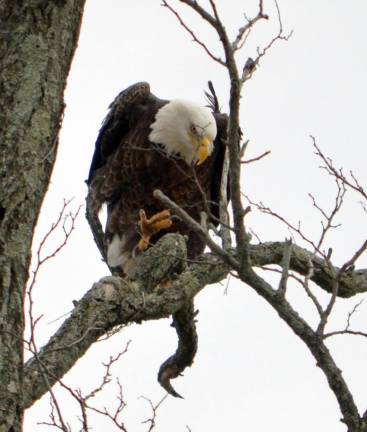
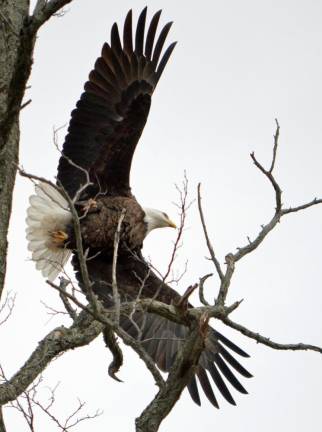
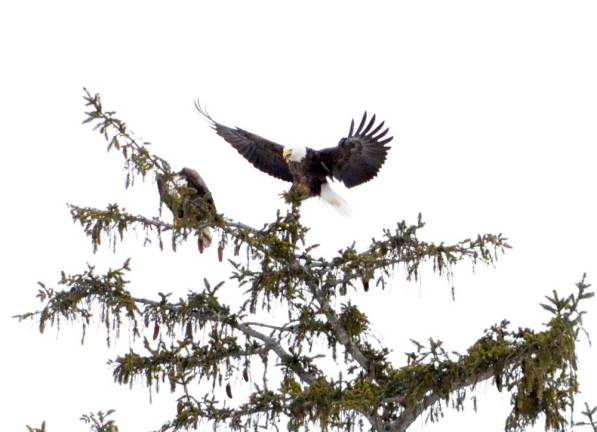
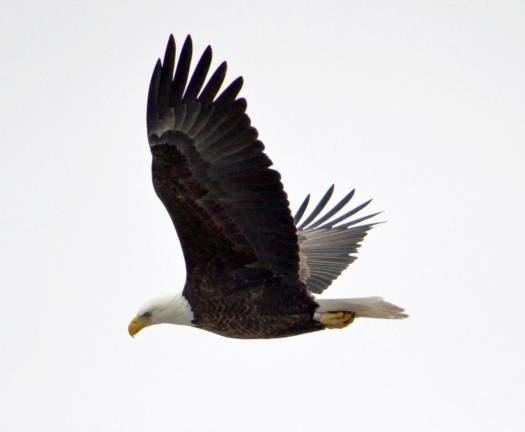
Last winter was cold and the snow was deep. If you happened to be a non-hibernating, four-legged herbivore there was almost no accessible plant material to put in your belly to keep you going. In late January, several deer showed up outside our house, to scratch around in the kitchen compost pile for anything remotely edible and to browse on the marginally palatable leaves of a few shrubby yew trees in the front yard. Over time, we noticed a couple of small deer, almost certainly experiencing their first winter, growing weaker by the day. Eventually they succumbed, I assume, to starvation and the cold nights. We dragged the first one into the woods where it would provide a windfall for the farm’s carnivorous inhabitants. The second stiffened carcass I transported to a field viewable from our bedroom window, a few hundred feet away. Within three days an immature bald eagle, unable to snatch fish out of nearby frozen lakes and ponds, showed up for some needed protein. Soon after, an adult eagle touched down. I was ready for them with my telephoto lens. Other local residents, including crows, red tail hawks, the neighbor’s dog and, I suspect, coyotes, all came in for a venison boost.
When my wife and I moved from Manhattan to our farm in Orange County in 1986, the prospect of spotting a bald eagle overhead would not have crossed our minds. There weren’t any, at least not in our locale. Now, 35 years later, if you spend enough time outdoors and have a sharp eye, there’s a fair chance you’ll catch sight of one or two eagles high in the sky in any given week. A birdwatching neighbor tells me there are at least three nesting pairs living in our town. Another neighbor directed me to an enormous, occupied eagle nest in a tall tree on the edge of a large, marshy pond less than a mile from our house.
To be clear, the bald eagle, our stately national bird, with a wingspan of seven feet or more, a body weight often exceeding 12 pounds, and the ability to fly at an altitude of 10,000 feet, is, most emphatically, not bald. The heads and necks of adult eagles are graced with white feathers which, presumably, in addition to giving the birds a regal look, keep them warm should they desire to fly at such great height. The head and neck feathers of immature eagles are mottled brown and white. Not until they reach the age of five do they earn their fully white feathers.
By the mid-20th century, the bald eagle was on the verge of extinction in the contiguous United States. Once so plentiful across America that farmers considered them a pest, by 1963 there were fewer than 500 breeding pairs living in the lower 48. Hunting and habitat loss were factors in their decline, but the primary culprit was the widespread use of DDT. Hailed at the time as a miracle compound, this pesticide did not kill the birds outright. Rather, their inevitable ingestion of the tasteless chemical – biomagnified in the bodies of their largely aquatic prey – weakened the shells of their eggs to such a degree that when the adults sat on them, they would crack before incubation was completed.
Rachel Carson’s groundbreaking 1962 book, Silent Spring, exposed the devastating effects pesticides were having on the natural world, particularly on birds. Largely due to Carson’s work, DDT was banned in the US in 1972. A year later, back in the days when Washington, D.C. actually felt some responsibility to function in the national interest, Congress passed the Endangered Species Act, which led to full protection of bald and golden eagles. Since then, recovery has been dramatic, especially for bald eagles.
Today there are over 300,000 in the lower 48, an equivalent number in Alaska and a sizable population in Canada. Every state in the Union, except Hawaii, has some. New York has over 400 breeding pairs — almost as many as were in the lower 48 states combined in the 1960s. Pennsylvania boasts more than 300 nests today, up from just three nests in the Commonwealth in 1983. New Jersey now has more than 220 nesting pairs, less than four decades after the state’s only remaining nest failed for six consecutive years.
The rapid recovery of the bald eagle is a Herculean success story that suggests we have the capacity to revive the depleted natural world when we care to do so.
But the bigger picture is not so rosy. A 2019 study by an international team of scientists led by Ken Rosenberg of the Cornell Lab of Ornithology gives us the bad news: across North America, bird populations declined by 29 percent over the previous 50 years. That’s nearly 3 billion fewer birds of breeding age than were here in 1970.
Imagine, if we set our minds to it: Could we do for these smaller birds what we managed to do, in just a few decades, for our magnificent eagles?